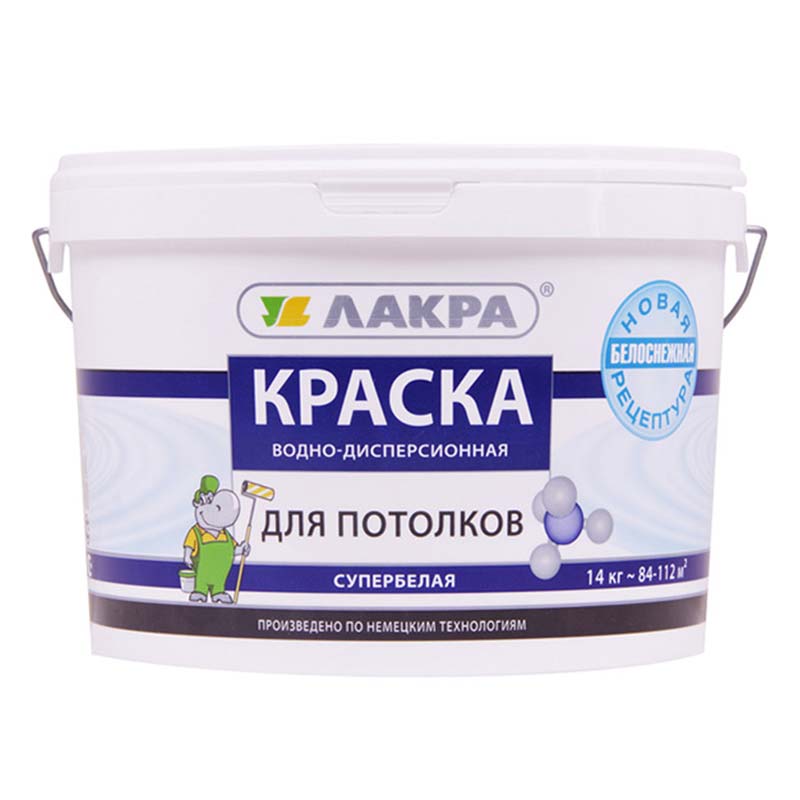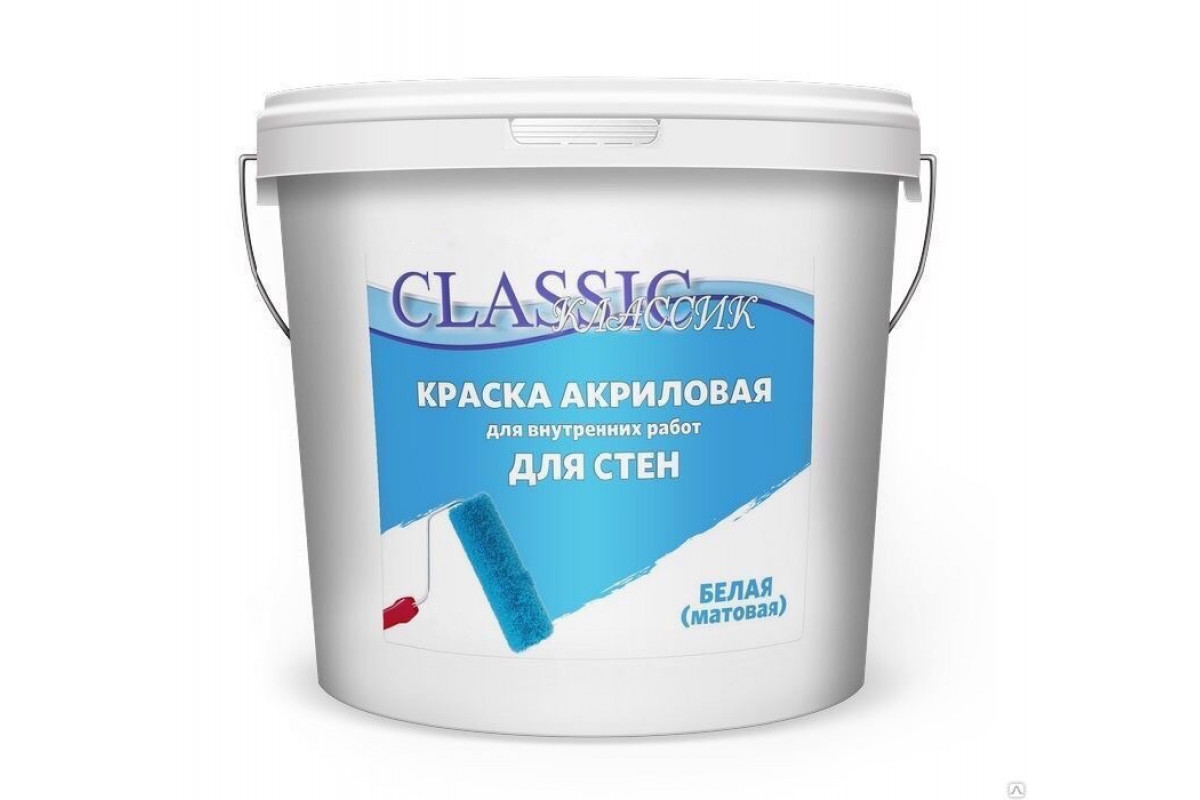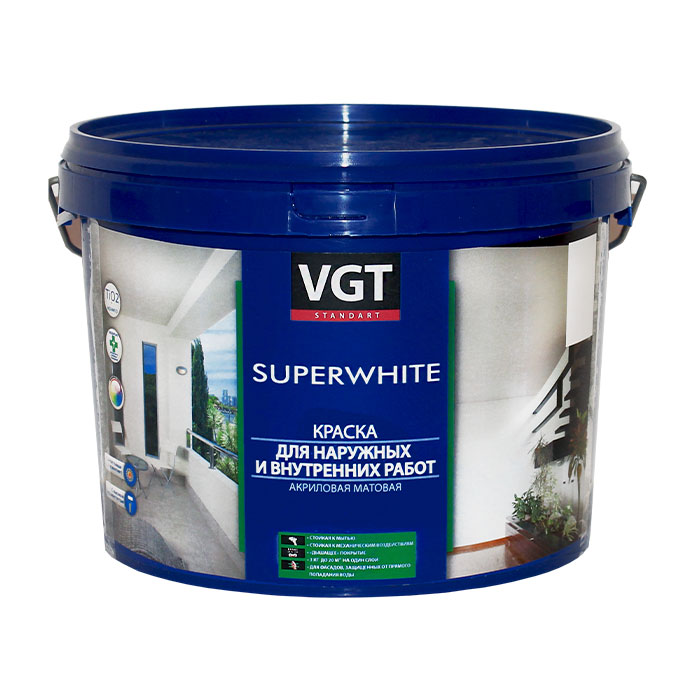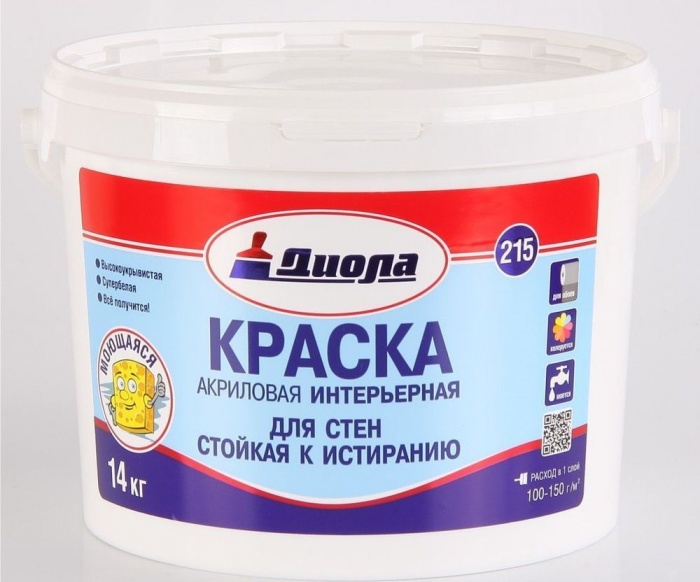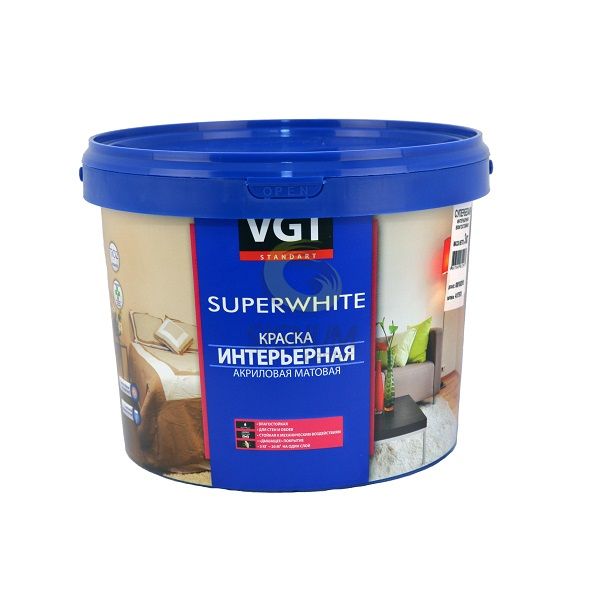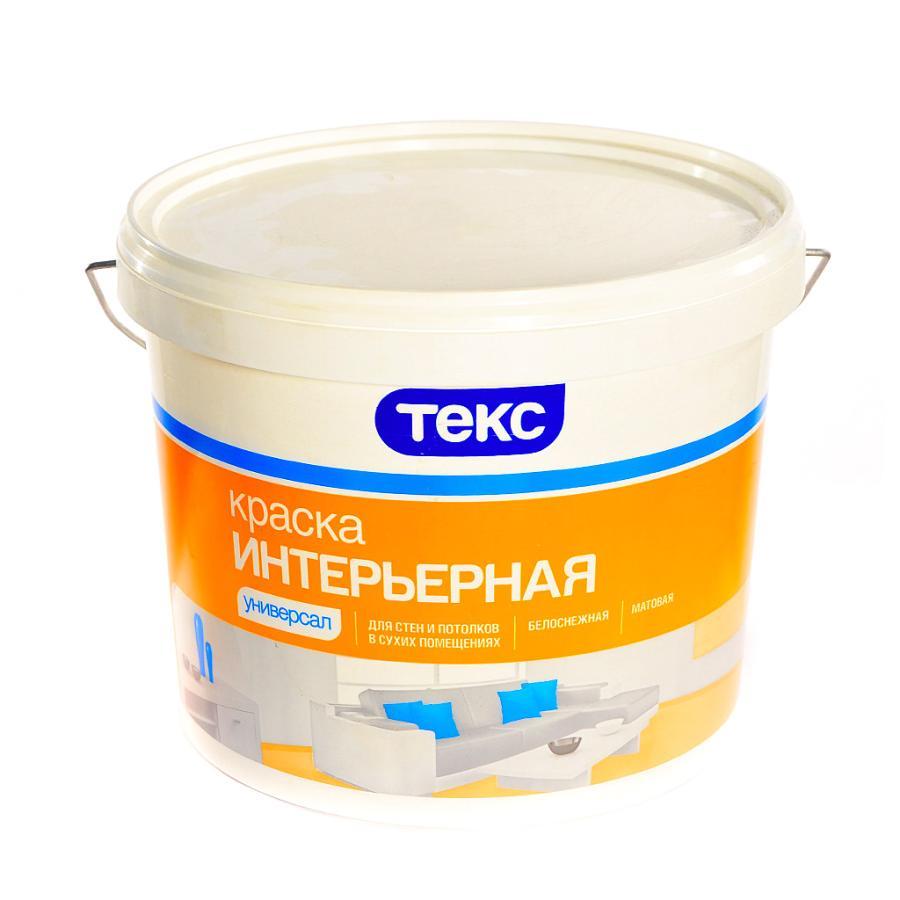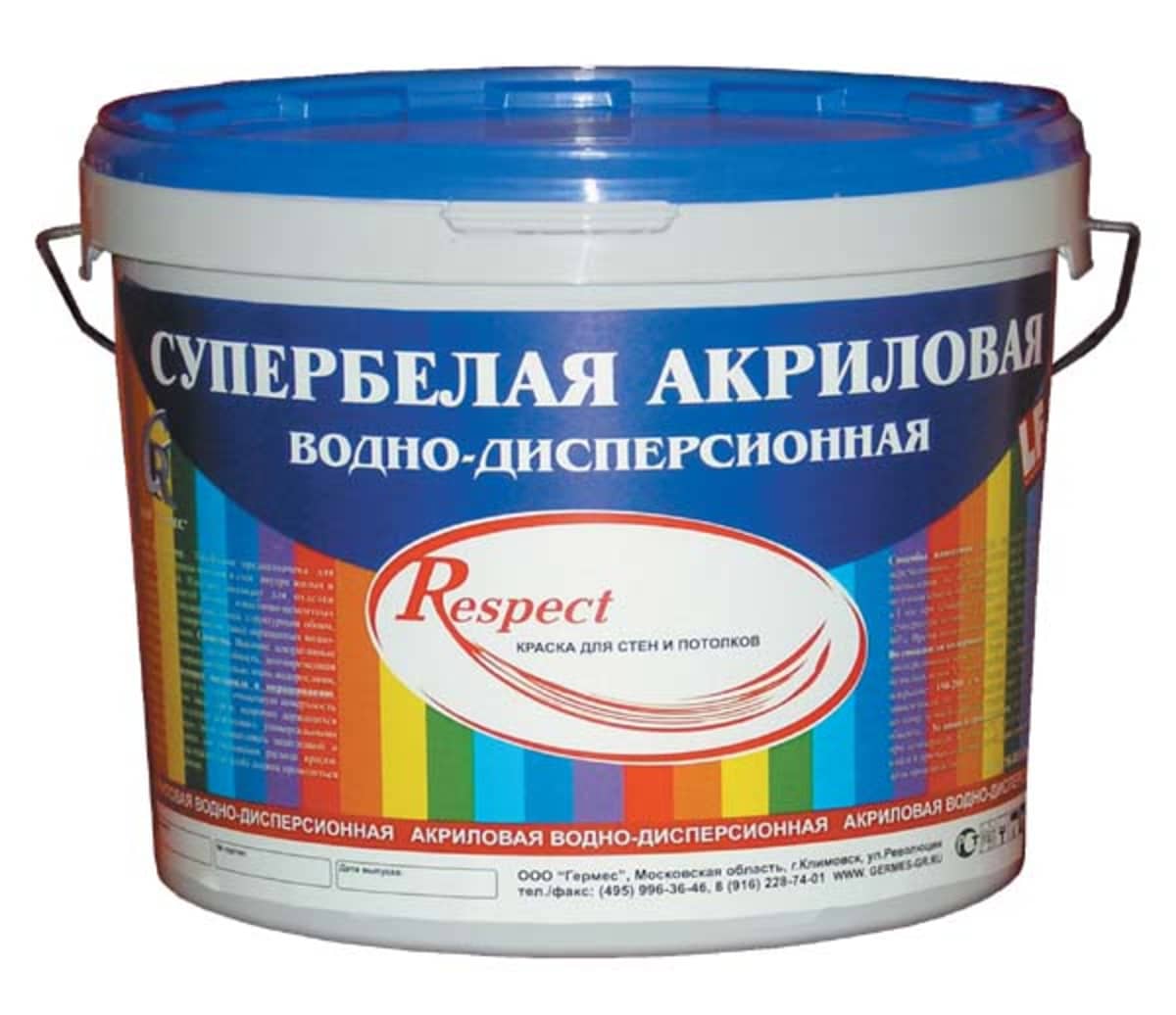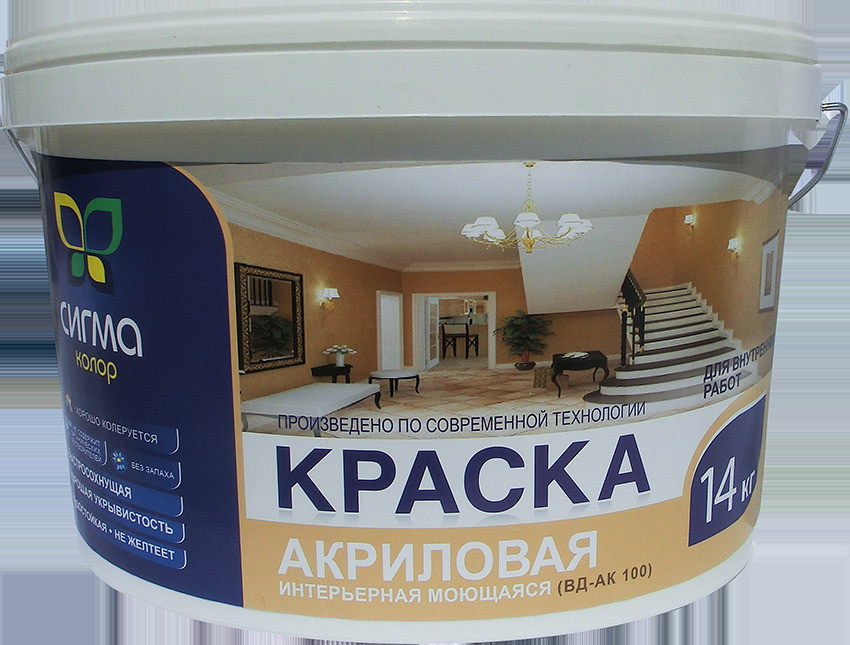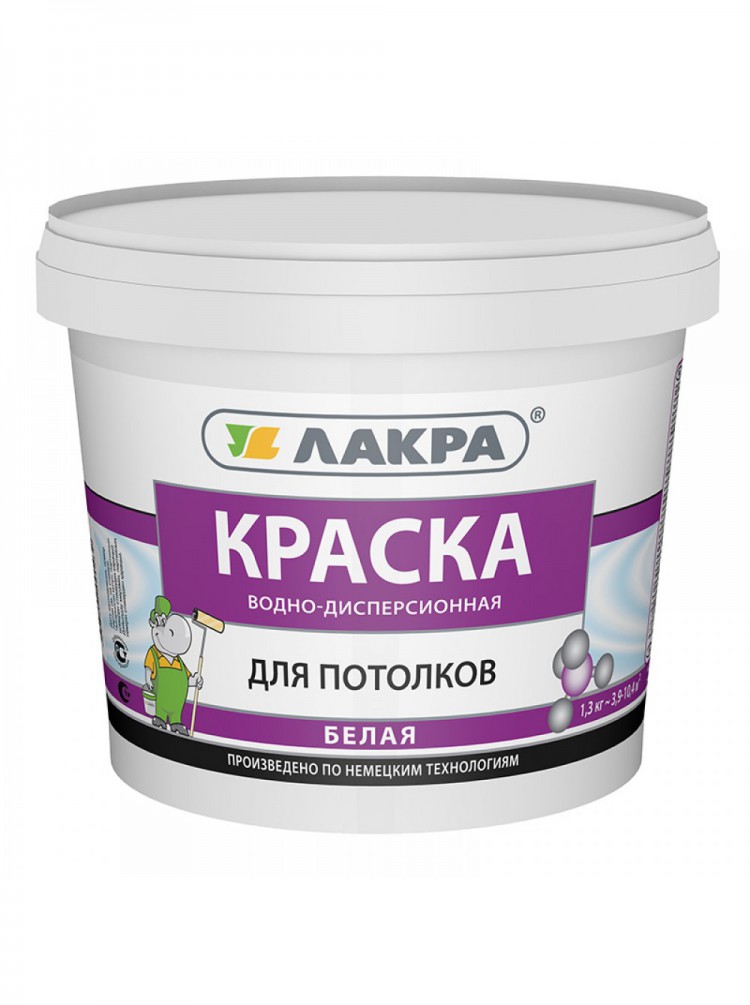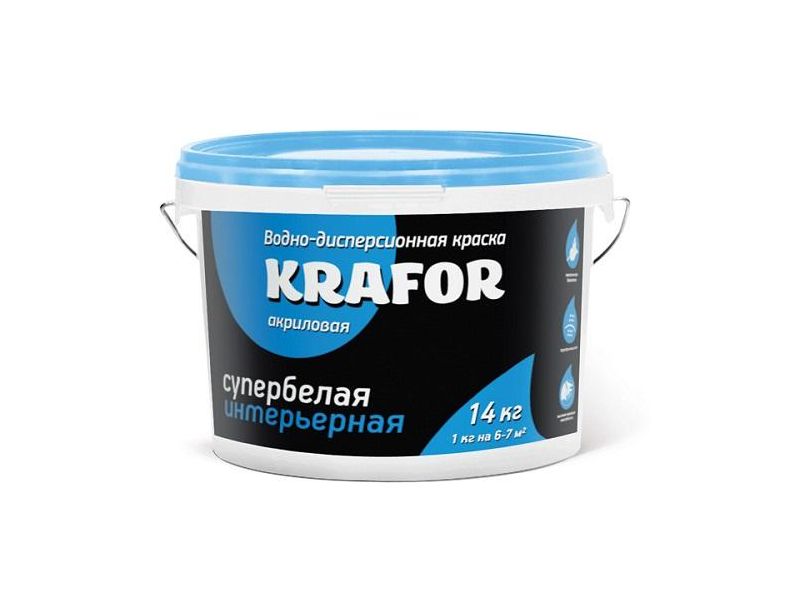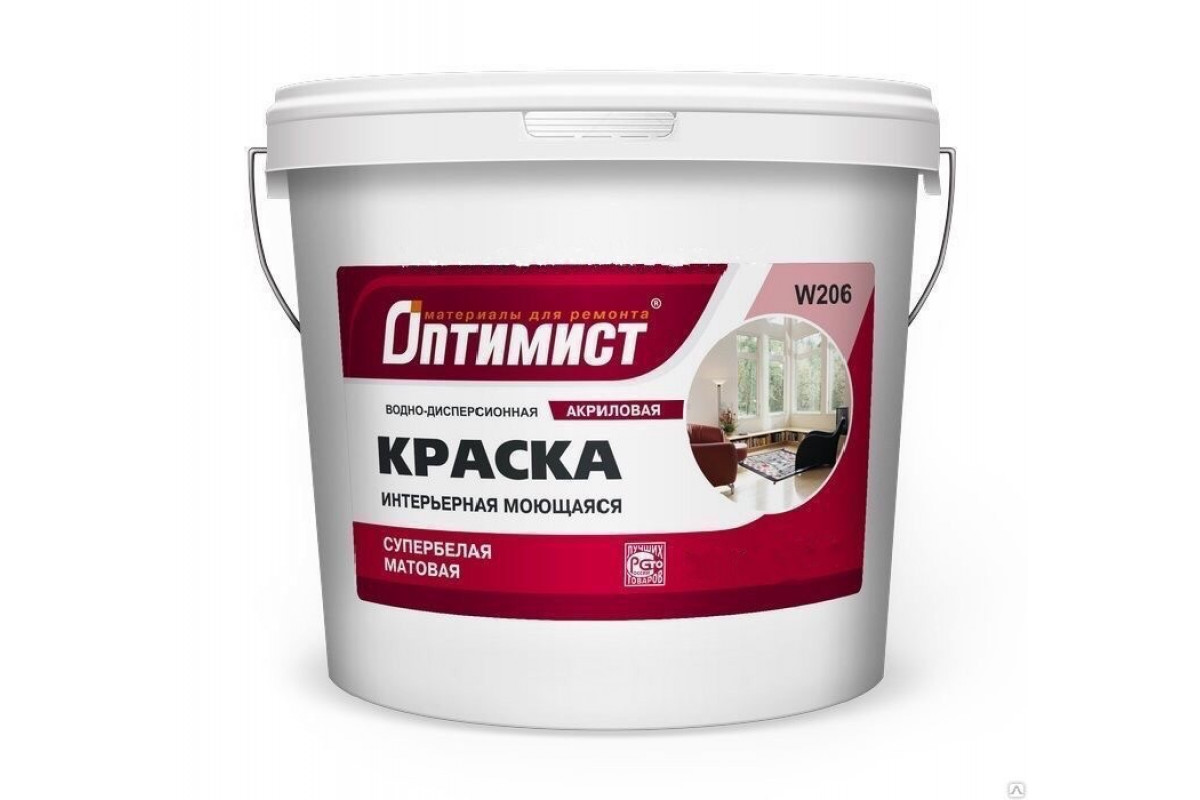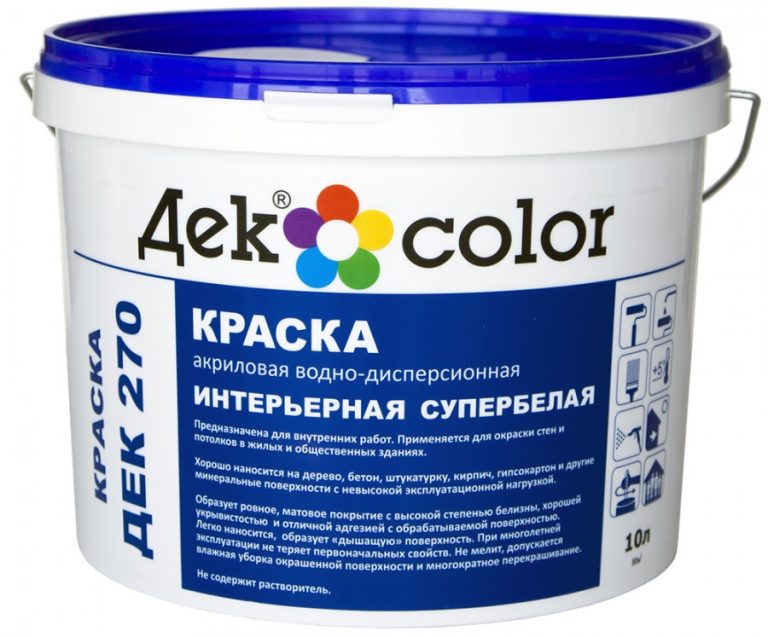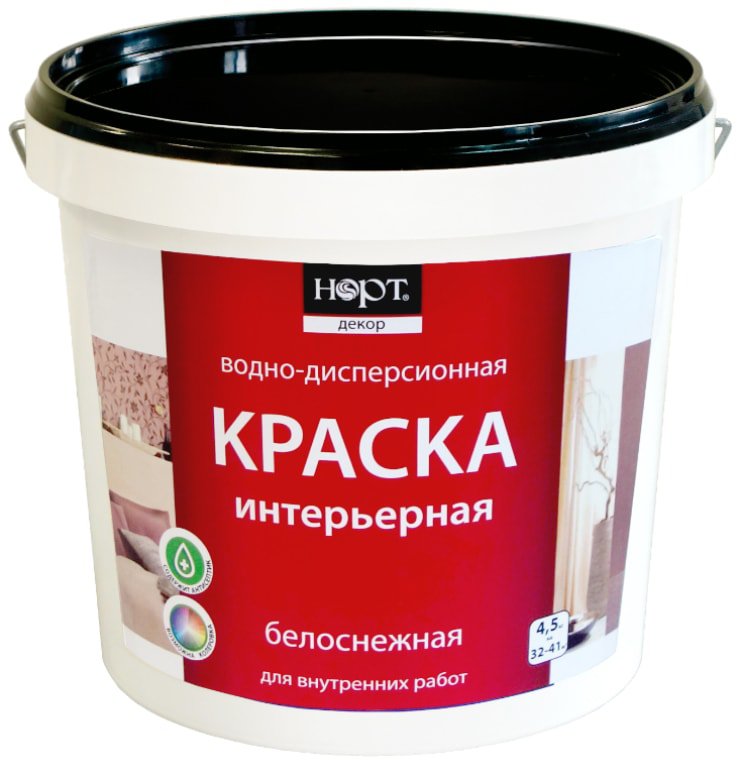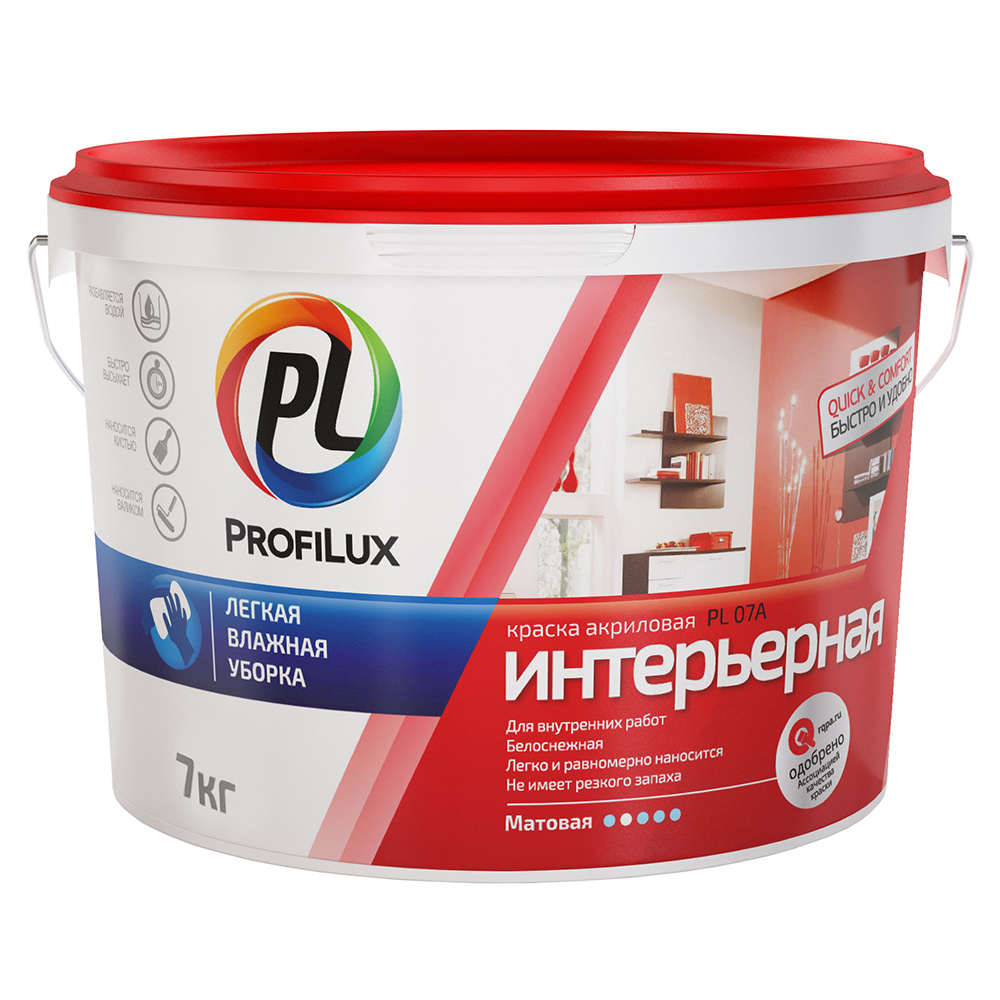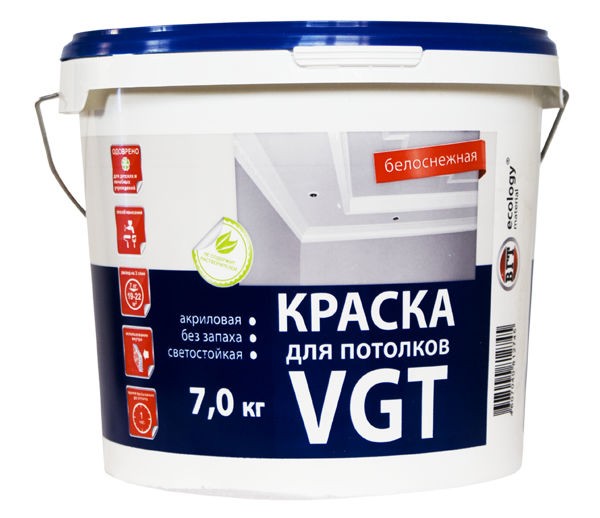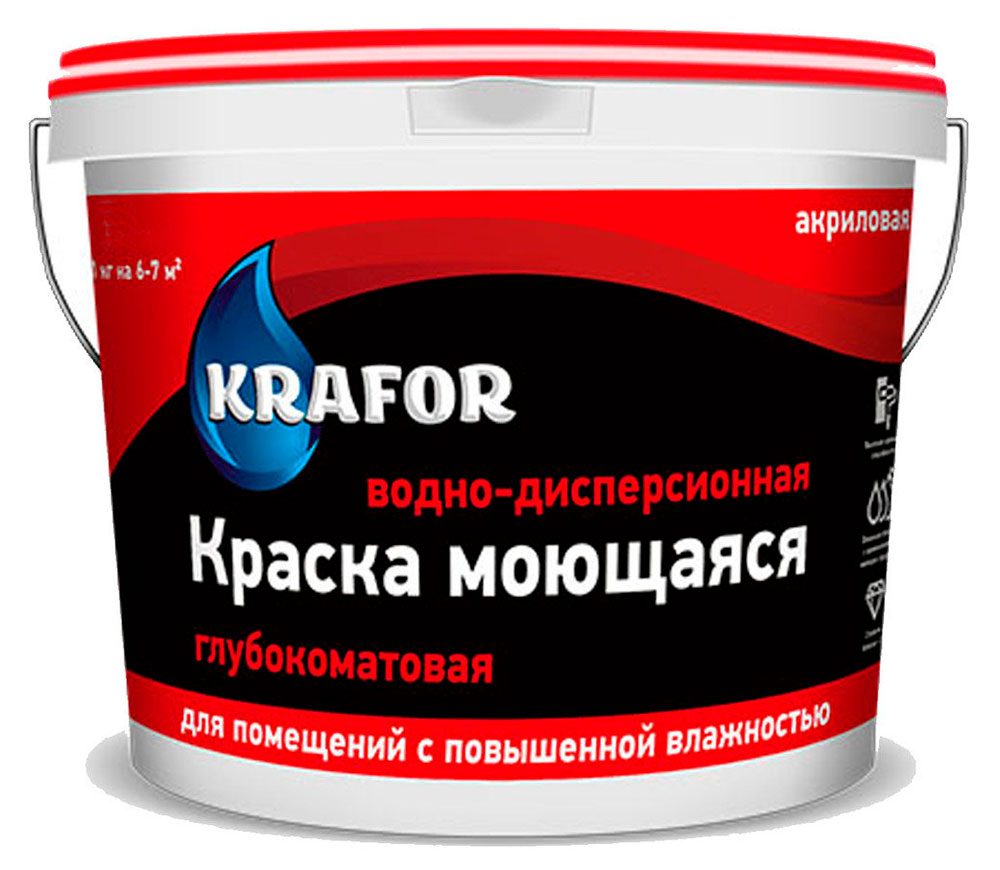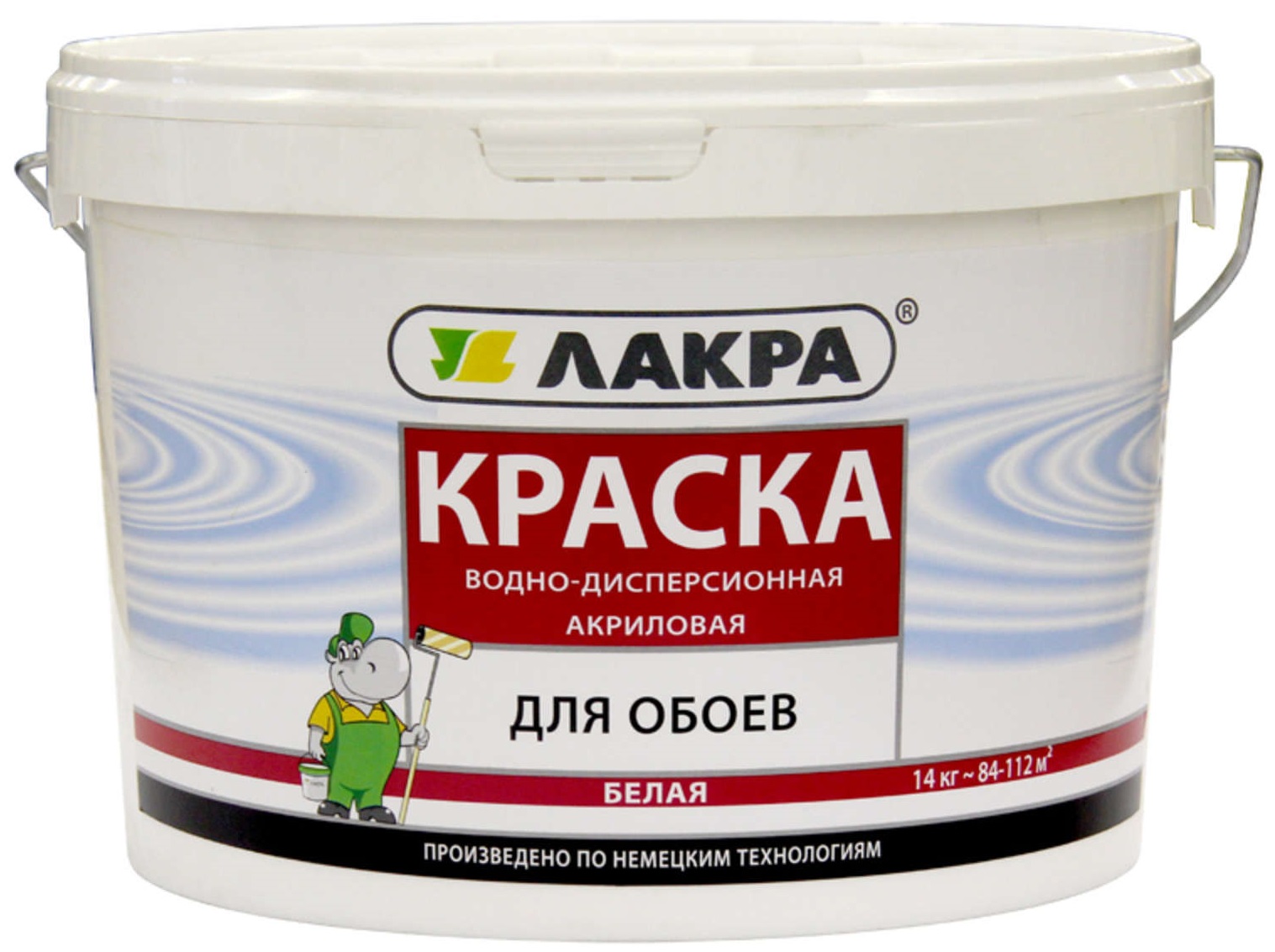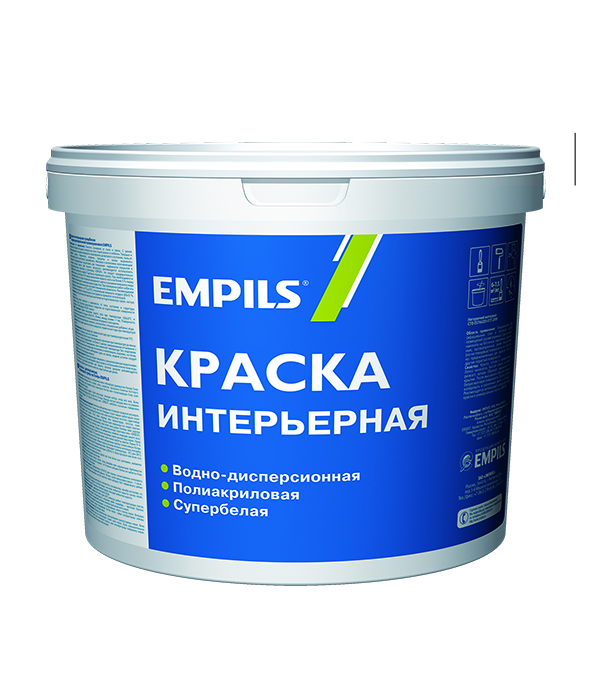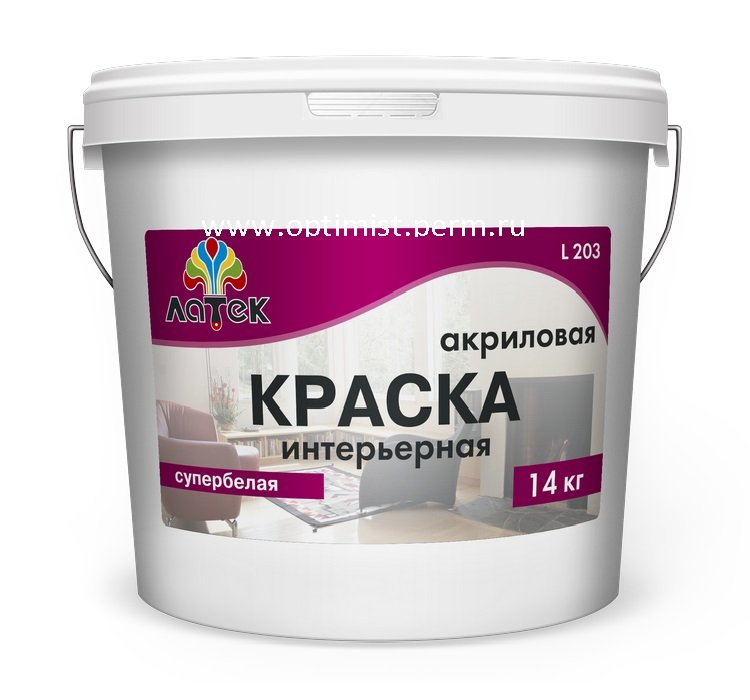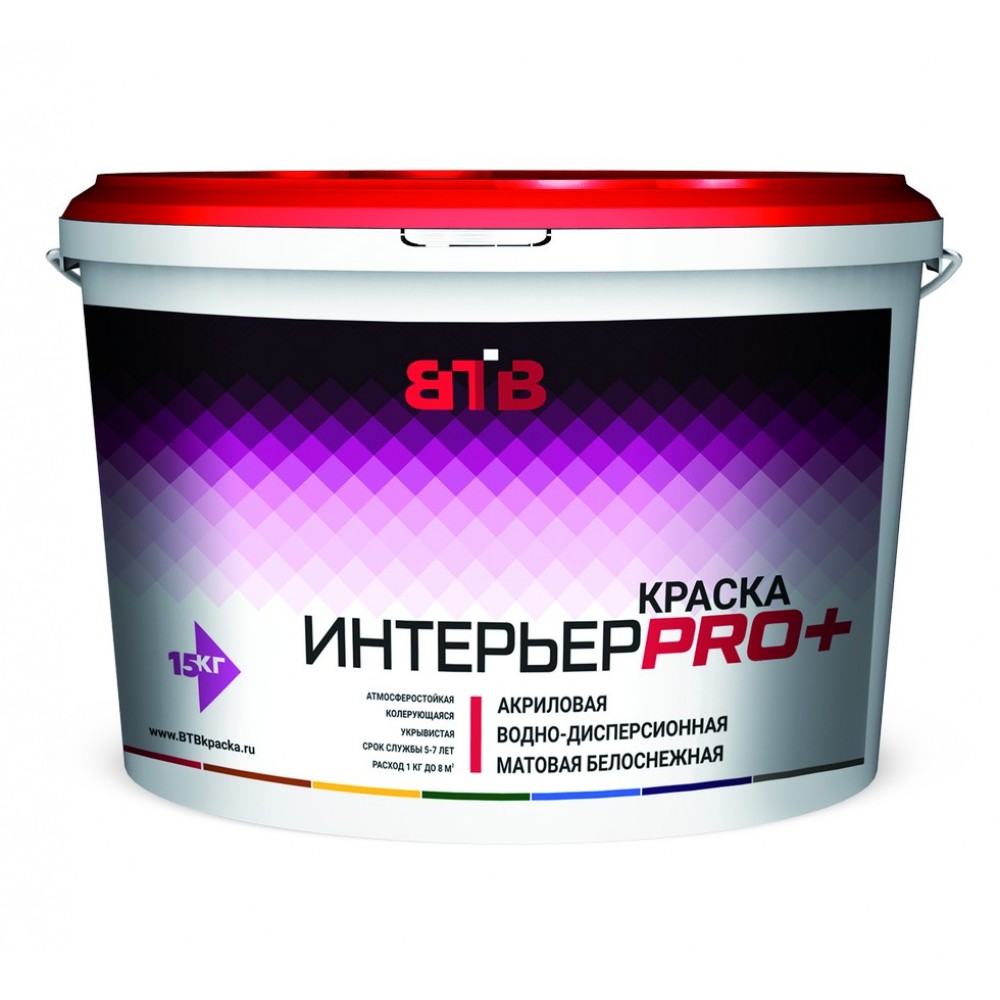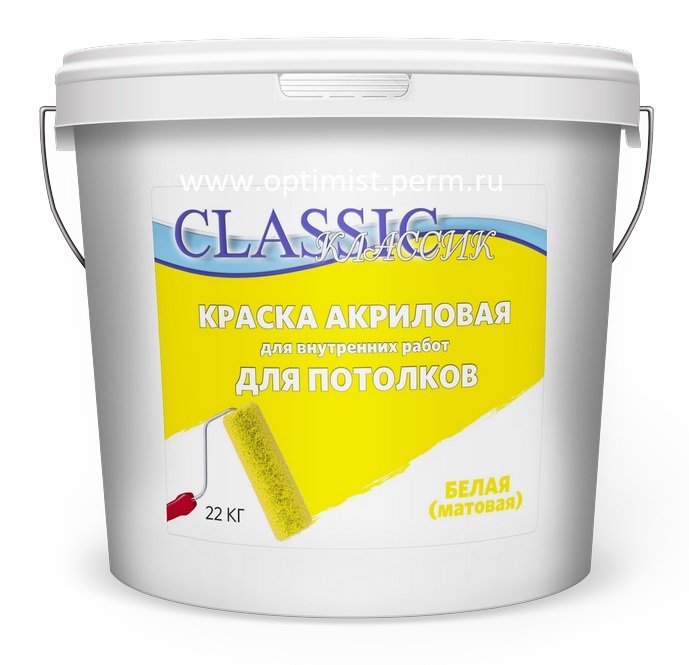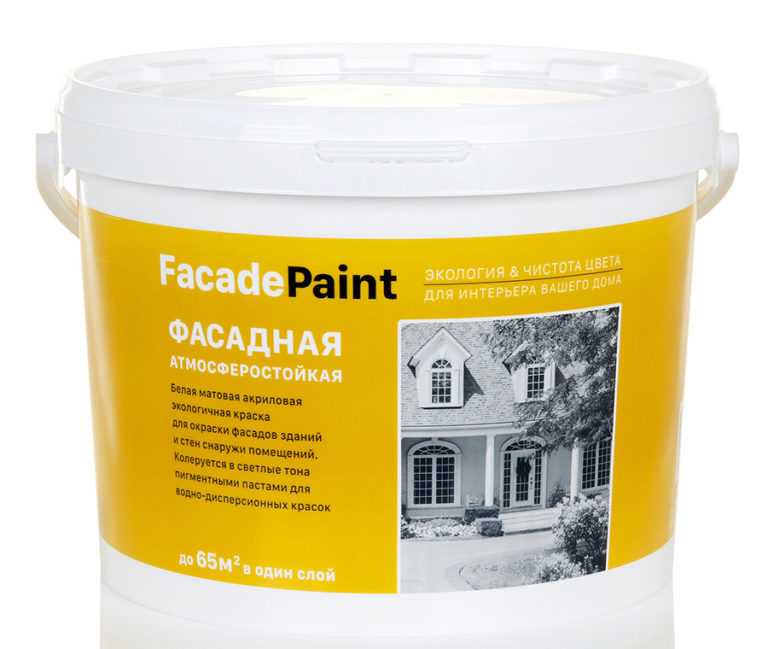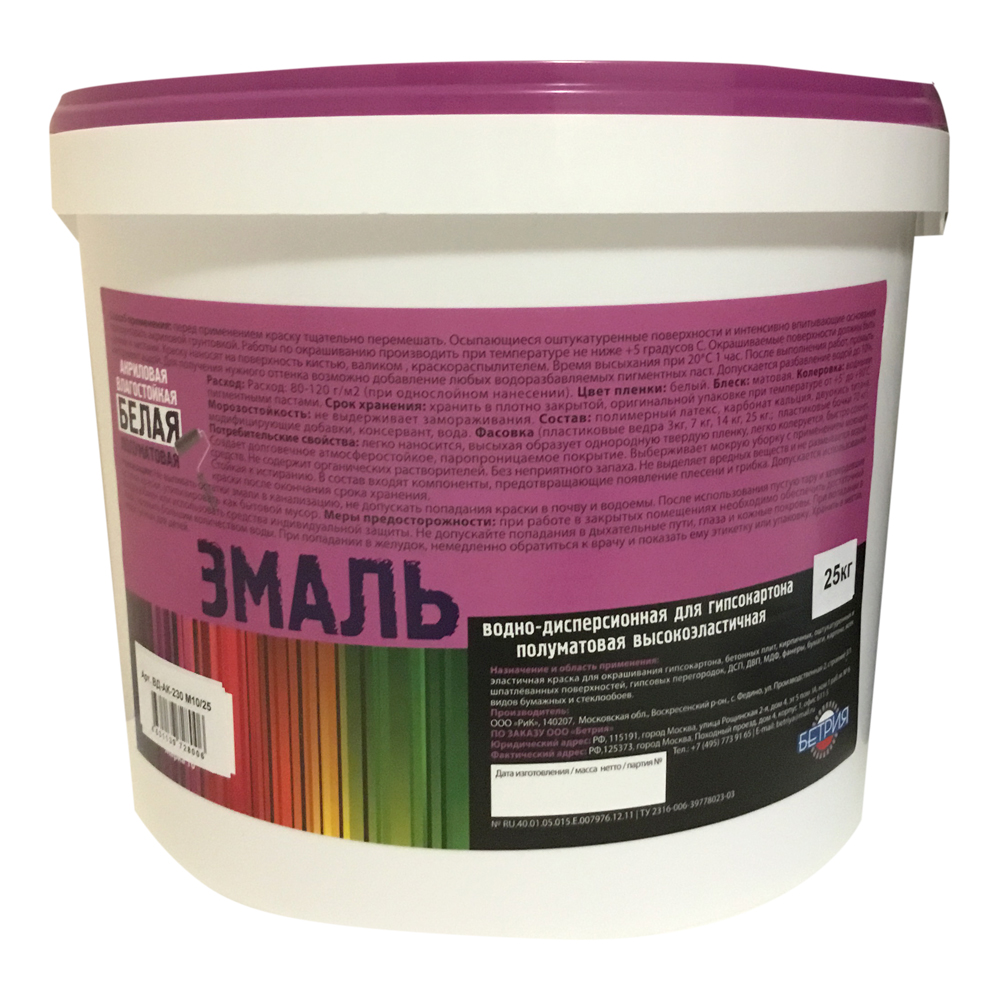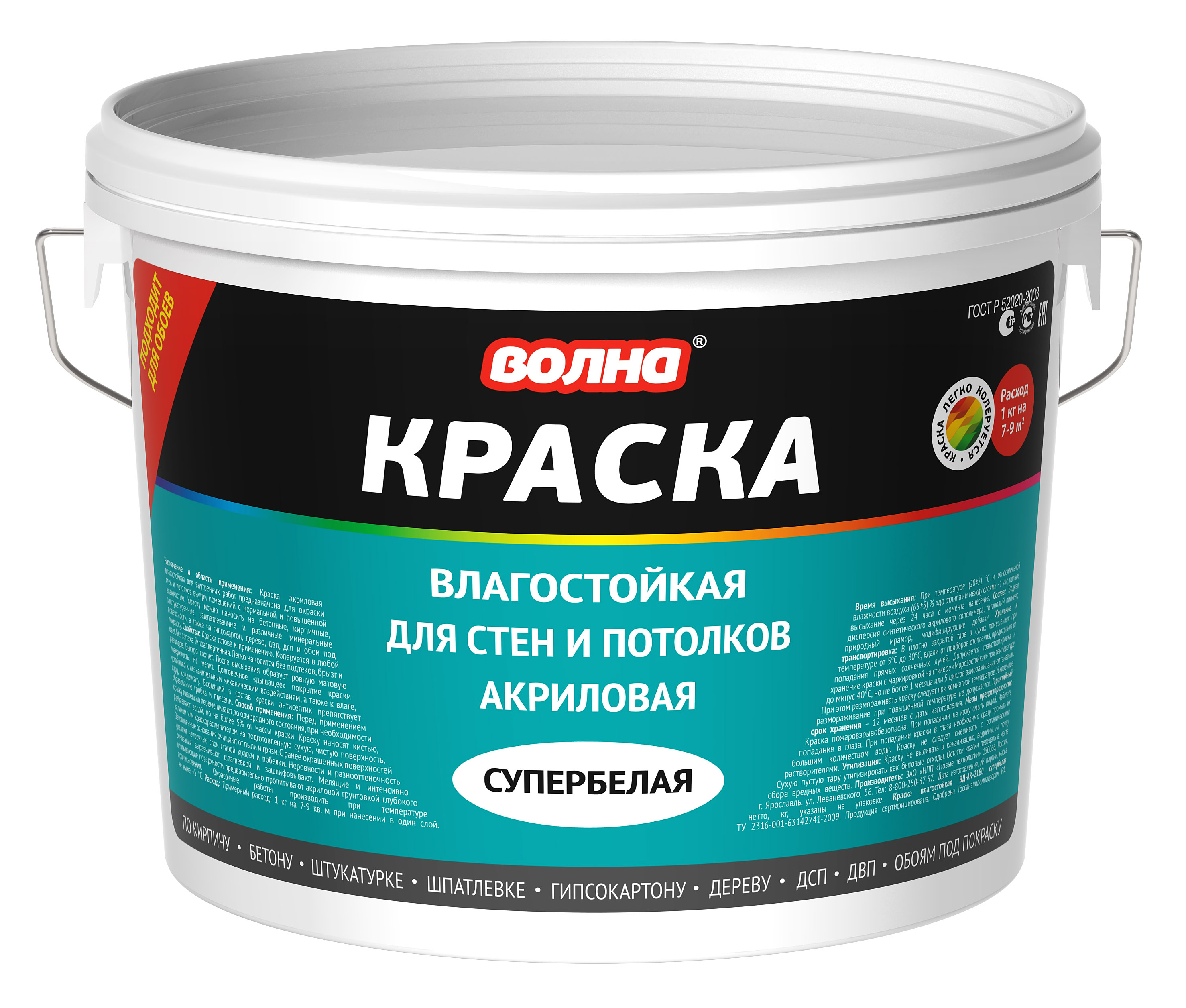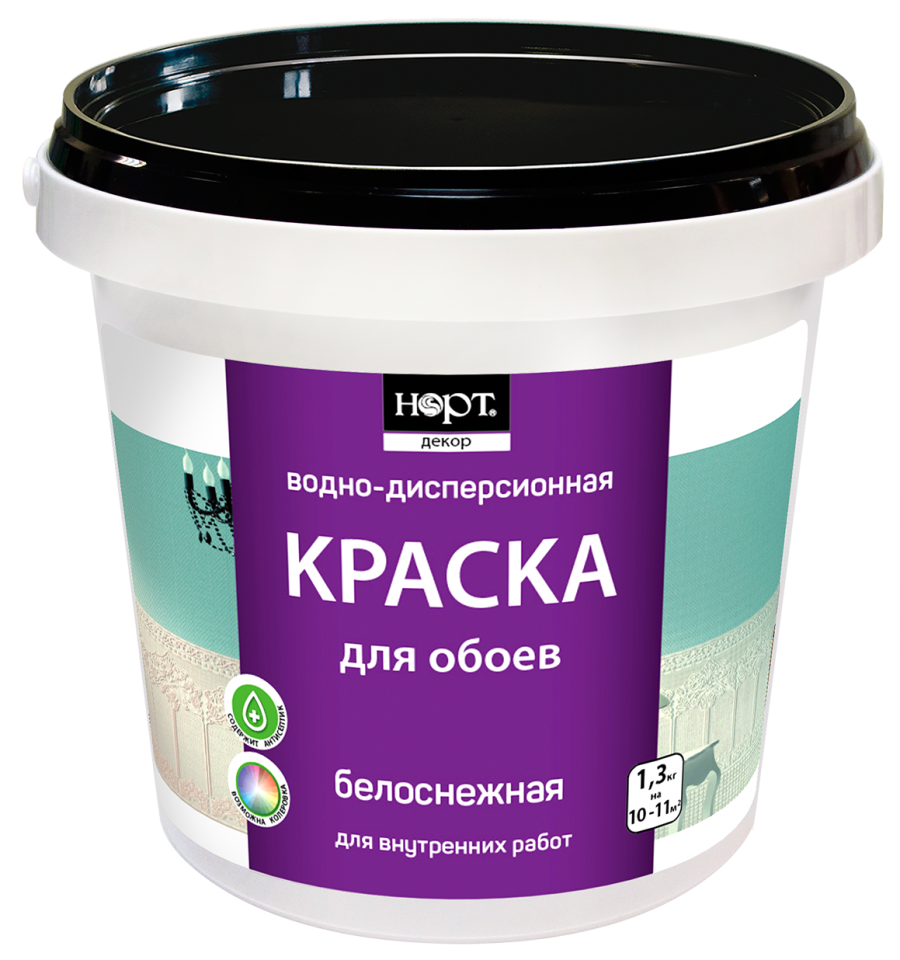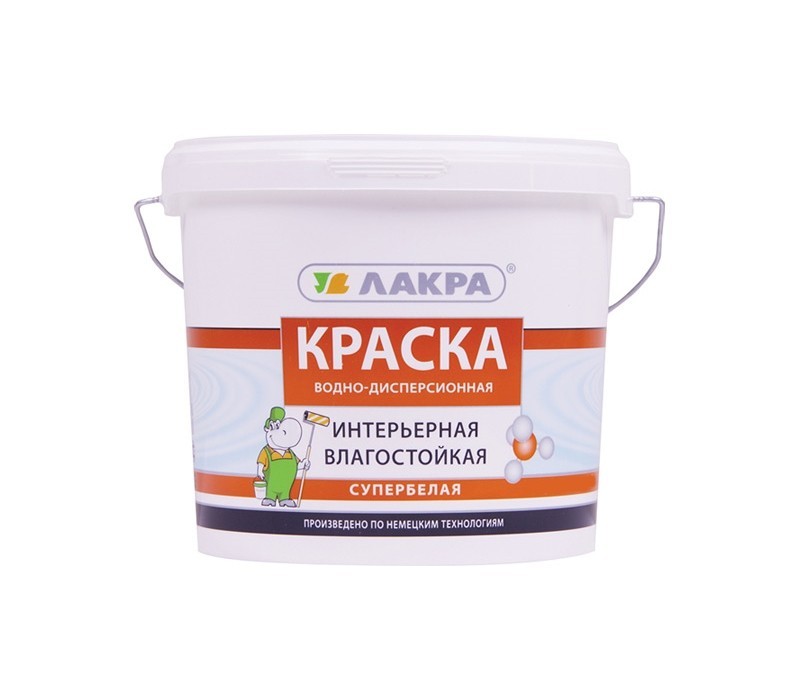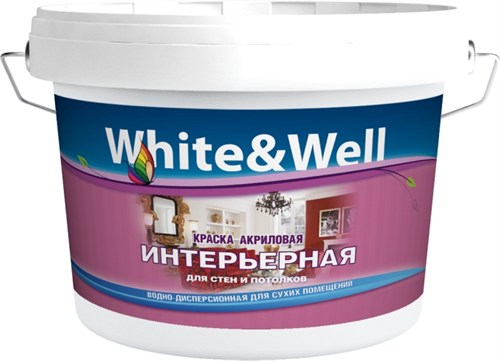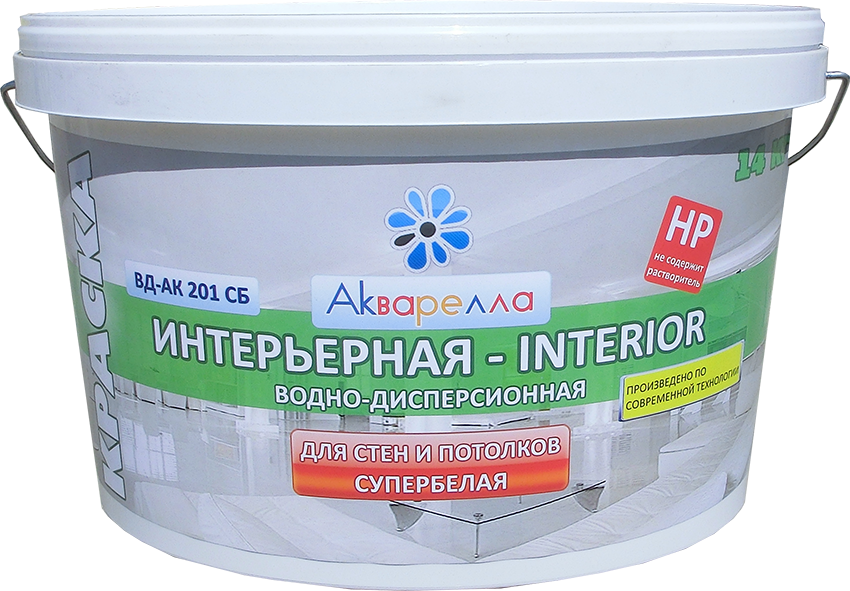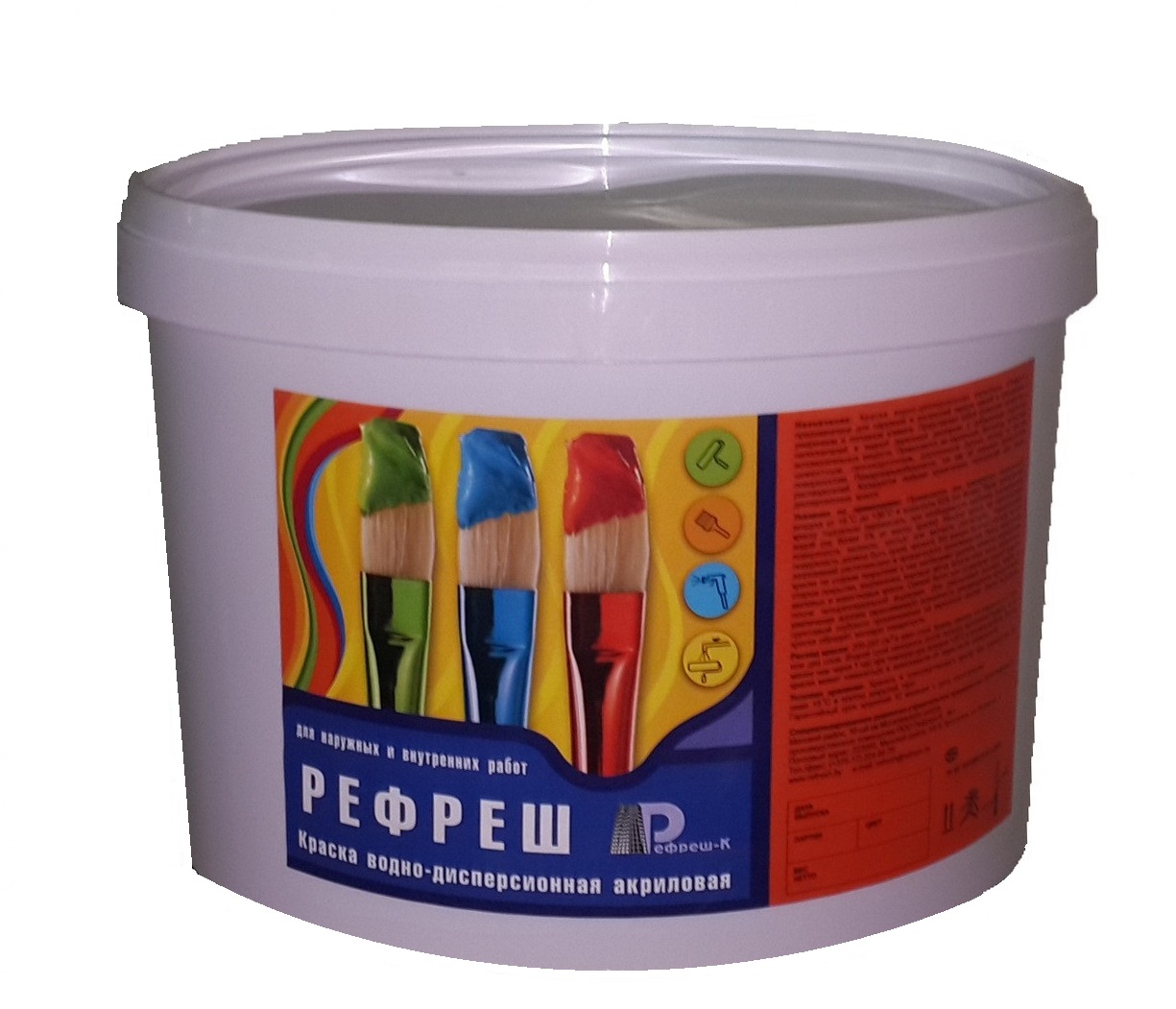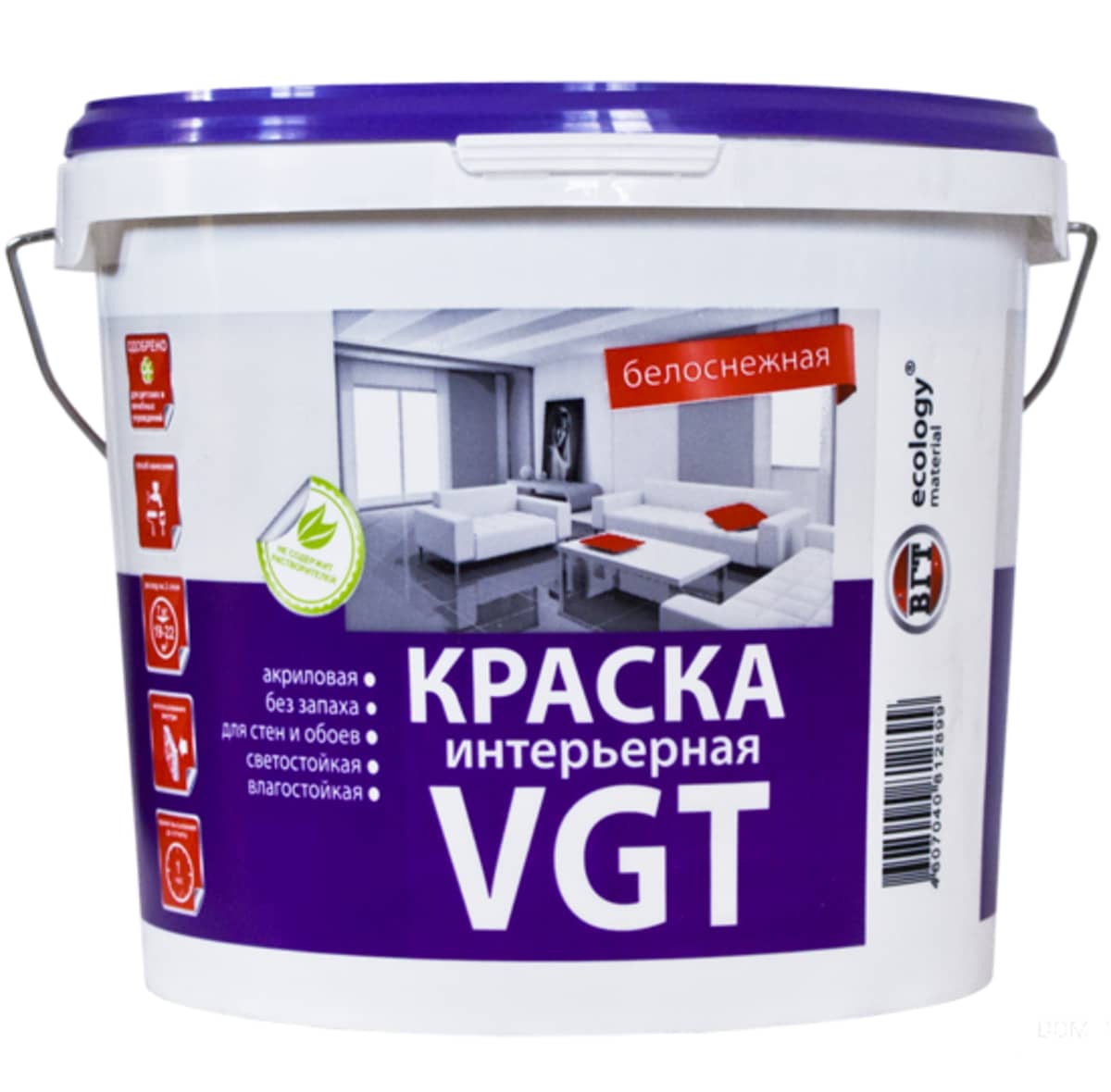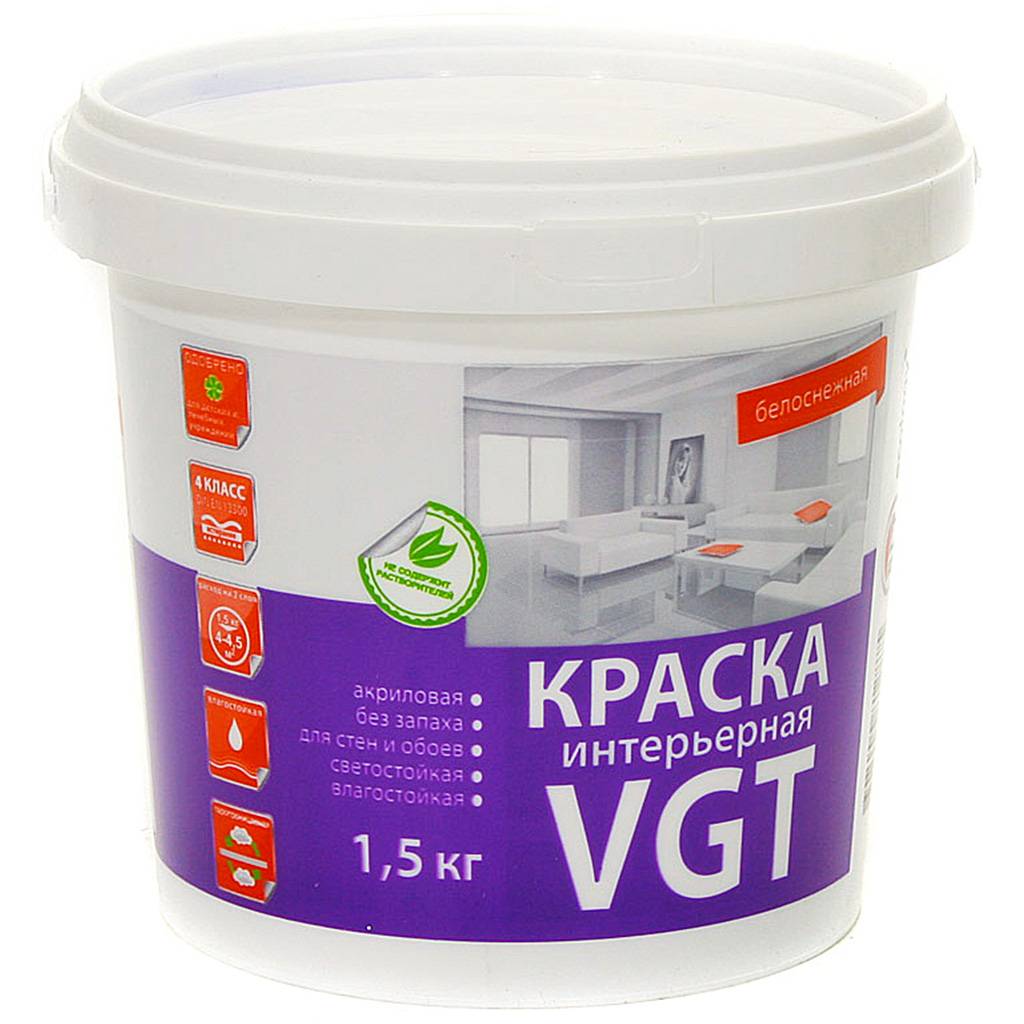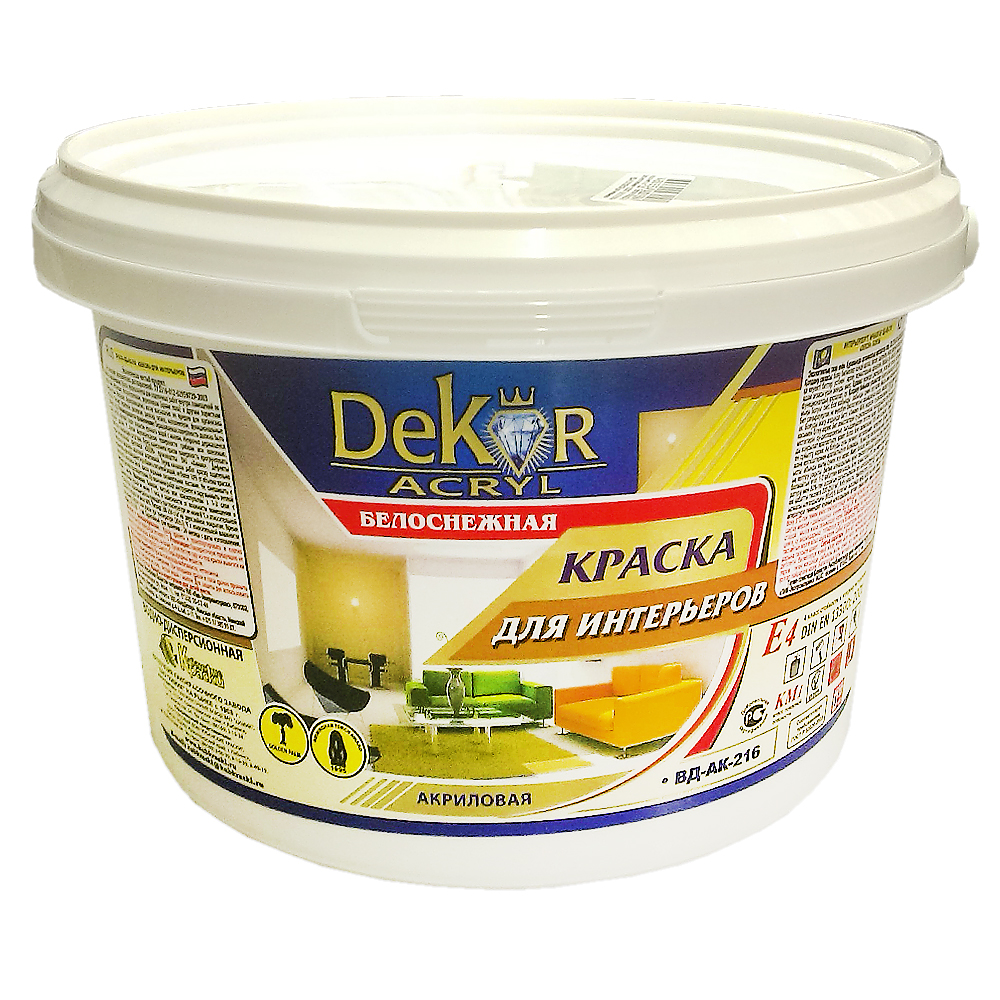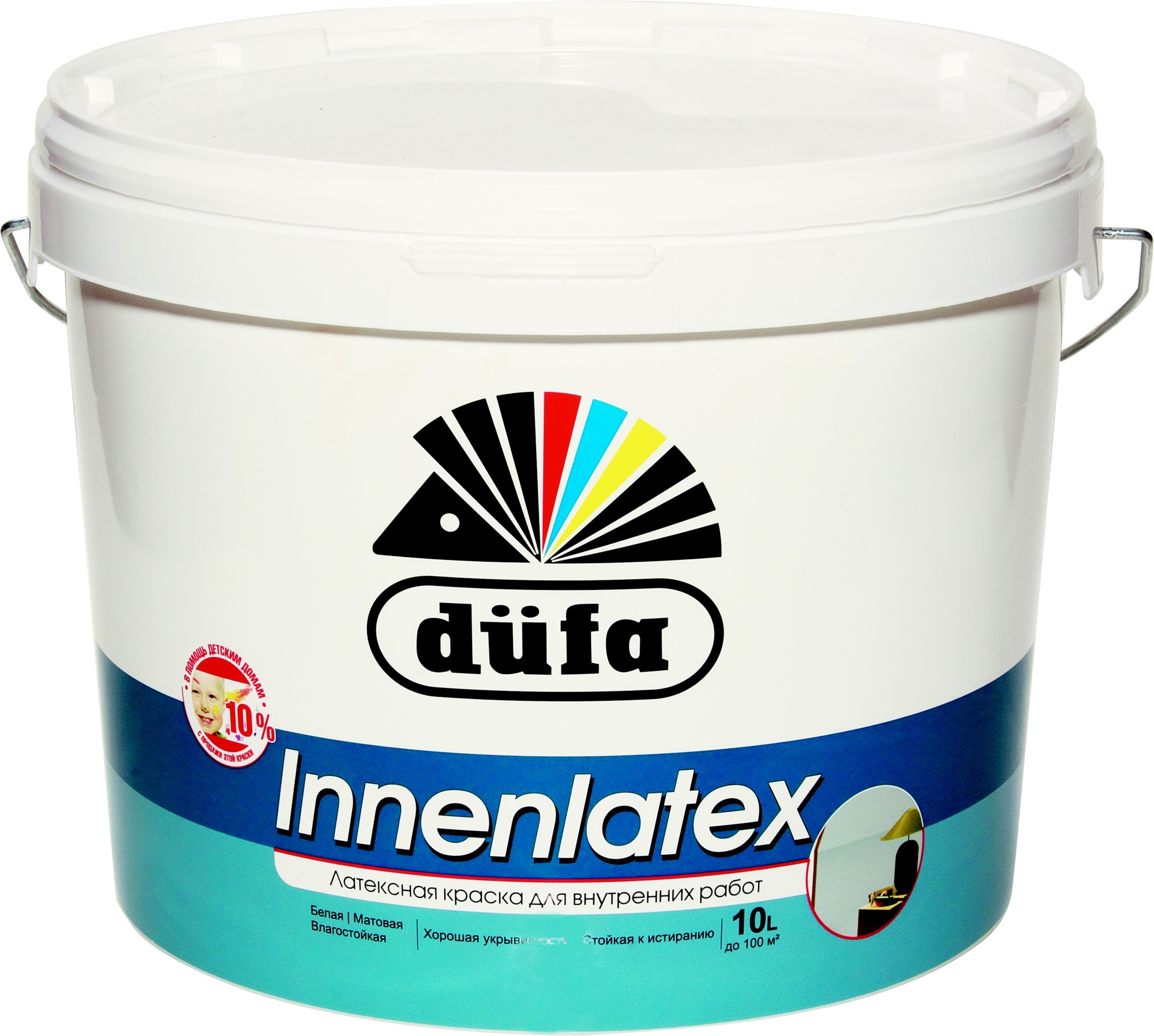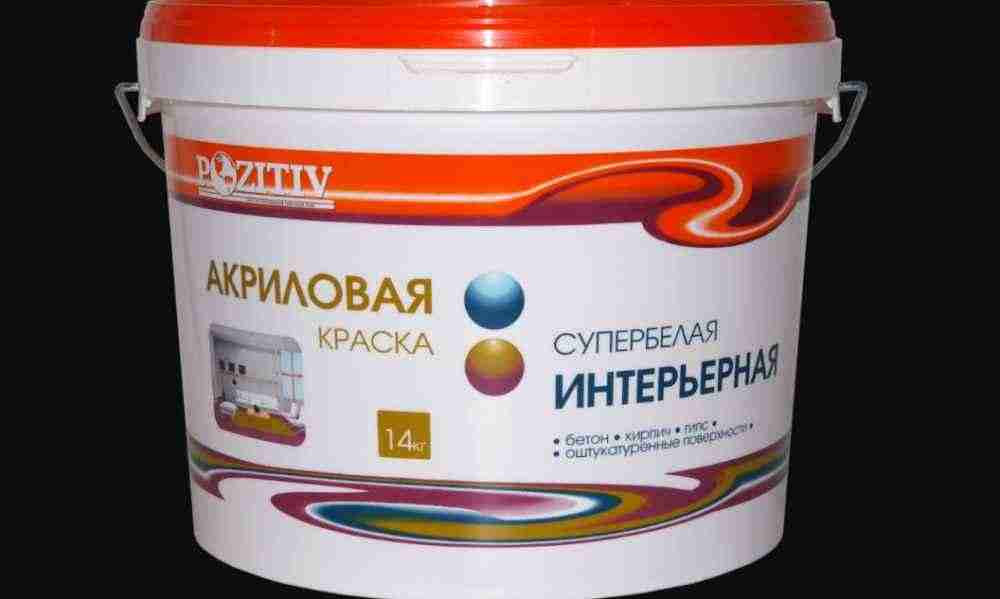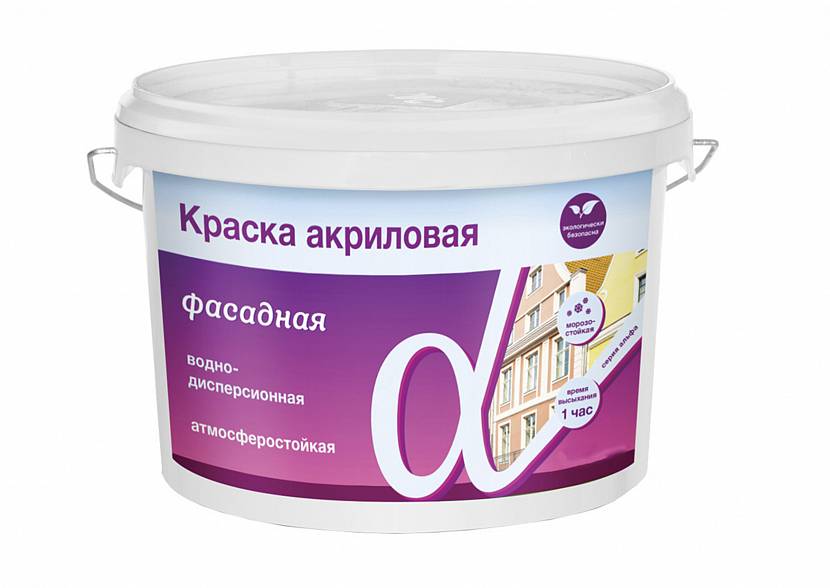The main types of water-dispersed paints by bases and their characteristics
The developers annually offer dispersions with new inclusions and binders. Relatively new proposals include some decorative emulsion and water dispersion paints that form an unusual texture, for example, imitating a stone. They can be applied to any primed substrate, including wood and metal.
Modern water-based enamels are classified by type of application:
- Facade;
- Interior.
They contain common components, for example, to protect against mold and mildew, all differ in composition and characteristic properties. There are also latex and hammer formulations with a special effect.
The developers annually offer dispersions with new inclusions and binders.
Polyvinyl acetate
PVA-based paints are characterized by low hydrophobicity, so they should not be used in a damp room. They are suitable for painting plastered ceilings in an apartment with a stable temperature regime. This is a budget option for redecoration.
 They are suitable for painting plastered ceilings in an apartment with a stable temperature regime.
They are suitable for painting plastered ceilings in an apartment with a stable temperature regime.
Acrylate
Dispersion paint with the addition of acrylates remains the most demanded, due to the optimal ratio of price and quality. It is resistant to UV rays, therefore it is recommended as an interior design, even on the south side. A vapor-permeable elastic coating is also guaranteed.
The water-resistant composition is easy to use, the layer does not crack even with a noticeable temperature drop. But this does not mean that you can experiment as facade coatings, if the packaging says “for interior work”. The advantage is a perfectly flat surface after painting, regardless of the base material.
 The water-resistant composition is easy to use, the layer does not crack even with a noticeable temperature drop.
The water-resistant composition is easy to use, the layer does not crack even with a noticeable temperature drop.
Latex or styrene-butadiene
Styrene-butadiene dispersed compositions are moisture-resistant, but their pigment quickly burns out under the influence of sunlight. The interior is the place. These are latex formulations based on synthetic and organic resins such as rubber that look great after drying.
Application - toilets, bathrooms and showers, as they perfectly resist dampness and wash well. It is possible to paint insulated attics, cellars and wine cellars. The walls of glazed loggias and balconies are quite acceptable, provided that a dull shade is used (the polymer quickly burns out in the sun).
 Application - toilets, bathrooms and showers, as they perfectly resist dampness and wash well.
Application - toilets, bathrooms and showers, as they perfectly resist dampness and wash well.
Silicone
If we talk about what silicone water-dispersion paint means, then it is worth focusing on its specialization. It is known to specialists as a façade dye of excellent quality. These mixtures are distinguished by the property of repelling dirt and water, cleansing the wall during rains. Therefore, the building by the road will remain clean even in bad weather.
The coating will protect the walls from any impact, while maintaining high aesthetics and uniformity of processing. With this composition, specialists work on basement and facade surfaces - on brick, concrete and plaster. It is noteworthy that matte and glossy variations are offered for facade work.
 The coating will protect the walls from any impact, while maintaining high aesthetics and uniformity of processing.
The coating will protect the walls from any impact, while maintaining high aesthetics and uniformity of processing.
Dispersion-silicate
Silicate dyes are also water-based.Liquid glass and sodium ethyl silicate in its composition explain their name and classification - mineral paints. Main varieties:
- Dispersed silicate (acrylic added);
- Silicate silicone.
The basic requirements for compositions and their properties are regulated by GOST.
Silicate dyes are also water-based.
Types and applications of acrylic paint
Depending on the scope and types of additives used, acrylic solutions also have their own classification. Each species has its own technical characteristics and features.
 Each species has its own technical characteristics and features.
Each species has its own technical characteristics and features.
Facade paints
The name makes it clear that they were created to protect the facades of houses from the negative influence of the environment. In addition to facades, they are used for painting fences, gates, and backyard buildings.
The surfaces painted by them will be reliably protected from rain, snow, a sharp change in temperature indicators, and other harmful influences from the outside. Only the cheapest paints from the acrylic series require additional protective agents to be applied on top. The most durable and reliable are acrylic substances containing organic solvents.
Compositions for facade works, which are based on water, are considered to be faulty in terms of protective properties from natural factors, but when marble chips are added to them, these properties become more reliable.
 Facade paints are created to protect the facades of houses from the negative influence of the environment.
Facade paints are created to protect the facades of houses from the negative influence of the environment.
When it is required to paint metal products, then it is necessary to choose compositions with elements designed to protect against rust formation on it.
 It is necessary to choose formulations with elements designed to protect against rust formation on it.
It is necessary to choose formulations with elements designed to protect against rust formation on it.
Working with wood involves the addition of special components that resist fungal formations. Colorless acrylics can be used to preserve the natural grain of the wood. Acrylic paint is ideal for covering concrete, plaster, stone, brick surfaces.
 Working with wood involves the addition of special components that resist fungal formations.
Working with wood involves the addition of special components that resist fungal formations.
Interior paints
Acrylic formulations designed for indoor use differ from formulations for outdoor use in the absence of components to withstand environmental influences. But inside the building, they also show their durability, resistance (do not crumble or crack), and the ability to maintain the brightness of the color for a long period.
Since they are easy to apply, work does not require special skills, they are often chosen for painting walls and ceilings in a room, they are great for embodying the most daring design ideas. With them, you can create whole wall paintings in the room.
Interior applications are also possible for furniture, they are suitable for transforming windows and doors. The main difference in artistic use for interior design from oil products is that they do not have a pungent odor, so it is possible to work with them at any time of the year, because you do not need to open windows in the cold.
 They are great for embodying the most daring design ideas.
They are great for embodying the most daring design ideas.
Specialized paints
There are many variations of paints that are suitable for special applications, add components, and they are suitable for a specific application.
Their use for painting bathtubs can be noted, they can be used to refresh the enamel coating of an old bathroom.
To do this, first remove the old coating, and then cover the bath with a moisture-resistant acrylic compound, here it is important to create a thick layer of several millimeters, the surface of the bathroom painted in this way will serve for about 10 years
Their use for painting bathtubs can be noted, they can be used to refresh the enamel coating of an old bathroom.
Acrylic car blends are also popular, they create a beautiful decorative finish that also protects the car from corrosion.
 They create a beautiful decorative coating that also protects the car from corrosion.
They create a beautiful decorative coating that also protects the car from corrosion.
Acrylic varnishes, which are often used for manicure and pedicure in beauty salons, are widely known. They are easy to apply, you can create a beautiful nail design, such a nail coating lasts for a long time.
They are easy to apply, you can create a beautiful nail design, such a nail coating lasts for a long time.
There are special paints for painting. They are available in tubes, cans, and other types of containers.
 They are available in tubes, cans, and other types of containers.
They are available in tubes, cans, and other types of containers.
It is not for nothing that acrylic paints are so popular, they have a number of advantages, and can be used to implement many design ideas, and simply as a protective coating for surfaces. Their main plus is environmental friendliness and safety against the background of good practical properties. A wide variety of species makes it possible to choose the best composition suitable for a specific purpose.
How to choose?
Which paint to choose for painting depends on the room itself and the operating conditions of the surface.
When choosing water-dispersed compositions, attention is paid to the following criteria:
- type of surface to be painted;
- manufacturer;
- popularity of the brand;
- operating conditions of the finished coating: exposure to temperature, moisture, light;
- quality conformity certificate;
- shelf life;
- compliance with storage and transportation conditions.
Dispersion mixtures are selected taking into account the type of surface. They sell solutions for processing wood, metal, concrete. They include additives that improve adhesion to a specific type of material. This information is indicated on the packaging. The composition for wood is suitable for painting wooden doors, windows, lining, board facades, protecting tree bark from rodents. Mixes for concrete are chosen for mineral coatings: plastered walls, concrete panels, bricks. Metal coloring solutions create a protective layer on metal structures and parts. Waterborne dispersion paints can be applied to acrylic enamel.
For internal work, all types of water-dispersion compositions are used. For rooms with windows facing north, choose latex paint. It is also suitable for painting the walls of corridors and hallways. For light, frequently visited rooms or kitchen and dining areas, a coloring composition with acrylic is selected. Ceilings should be painted with an inexpensive polyvinyl acetate mixture.
When painting exterior structures, the choice falls on an acrylic facade paint. It has the required performance properties and is resistant to negative atmospheric conditions. The composition is applied in several layers to achieve the necessary protective functions. The rubber paint has a high degree of protection, creating a vapor-permeable elastic cover. Silicone and silicate compounds are expensive, but fully justify their cost, protecting the surface from water and premature destruction.
According to the degree of shine, select glossy or matte paint. The choice is made depending on the interior and function of the room. A glossy surface is demanding for a rough finish, since all defects are visible on it, but the gloss gets dirty and easier to clean. Shine gives a special atmosphere to the room. Matte solutions have better coverage, give a rich color.
On a can or a bucket of paint, you must definitely find information about the production date and shelf life. You cannot buy an expired product. It is not usable. Large retail outlets have the ability to store products in proper temperature conditions.In smaller construction departments it is worth inquiring about the conditions in the warehouse. If you freeze the composition once, then it will exfoliate. poorly paint over the surface.
Sometimes the decisive criterion is the price
In this case, pay attention to inexpensive brands of domestic manufacturers. You can choose mixtures based on styrene with the addition of latex, which will reduce the price without sacrificing wear-resistant and lightfast characteristics
The choice can be made independently based on the information studied. It is also always possible to get recommendations from a consultant in the construction department.
In the next video, you can watch an overview of Simphony waterborne paints and tips for choosing them.
Acrylic VDK for outdoor use
If you plan to paint outdoors using VD-AK, wait for favorable weather conditions:
- High humidity with rain will prevent the freshly applied coating from drying out and hardening quickly.
- A strong wind can cause a lot of trouble. Ugly streaks, stains and adhering debris may appear on a freshly painted surface.
- Uneven adhesion of the paint can be "provided" by direct sunlight. On a hot, cloudless day, it is necessary to create artificial shading for the treated surface in order to avoid application defects and quickly solidified streaks.
Before getting started, stick to the following sequence:
- The initial compulsory action is to remove any contamination from the surface or degrease any material before processing the VDK.
- Level all irregularities and defects with putty, plaster or cement mortar.
- If mold is found on the surface being prepared, first remove it with a rag and a scraper, then soak this place well with a fungicide and leave it until completely disinfected and dry for a day.
- For walls that are painted for the first time, prime with a roller or brush. Then wait for the primer to dry. This usually takes about 12 hours.
- Stir the water-dispersion solution thoroughly before use, add color pigment if necessary and start working.
The paint is non-toxic, but difficult to rinse off when dry, so do not forget to wear protective glasses and gloves, and apply a layer of protective cream on your face.
Differences between acrylic and latex facade paint
For the user, the differences between acrylic and latex

The confusion in terminology is caused by the illiterate promotion of goods by retail chains and the general lack of a clear classification of paints and varnishes.
Hence, there are quite serious arguments about the "advantages of latex over acrylic" and other masterpieces that confuse the situation even more.
The whole difference between the products of one group consists in technological differences, variations in the chemical composition of the base and other intricacies of the production process, the details of which are often unknowingly passed off as completely different operations.
Sometimes there are attempts to separate the two concepts in this way: latex is the natural resin of a rubber tree, and acrylic is an artificially synthesized polymer. This is also not true, no natural resins are used, since such a product is too heterogeneous and cannot be used for a modern technological process.
In addition, prices for paints containing natural rubber tree resin would be too high and would not make the product competitive in the market.
Advantages and disadvantages
The technical properties of water-dispersion dyeing compositions occupy a leading position among other types of paints, and also significantly outperform materials based on organic solvents in their characteristics. Among the main advantages of VDK are the following properties:
- ease of application of the product;
- harmlessness and safety, including fire safety - they are ensured due to the complete absence of natural solvents in the substance;
- mechanical strength;
- excellent adhesion to various materials;
- fast drying - usually the surface does not stick after an hour or two;
- color and texture stability;
- large selection of shades;
- durability of the coating;
- vapor permeability, which makes the surface breathable.
The opinion that water-based products can be washed off with it is wrong. However, VDK have different resistance to humidity in rooms, therefore, in rooms such as a bathroom or kitchen, it is necessary to use only moisture-resistant products of this type.
Some experts highlight certain properties of the paint, positioning them as the disadvantages of the coloring composition:
- The technology of painting with such materials requires compliance with the temperature regime - the thermometer indicator should not fall below 5C with a humidity of no more than 80%. Under other conditions, the film does not form: at a lower temperature, it will burst, and at high humidity values, the composition will not dry out.
- Storage conditions assume a room temperature from 0 to + 30C.
- Water-dispersion compositions form a thinner film than solvent-borne ones - as a result, the surface for painting must be carefully prepared for work.
- The composition, which has not yet dried, must be protected from possible precipitation on the first day after painting.
- If the air temperature is too high, and the dye is exposed to ultraviolet radiation, the dispersion will dry out prematurely, which is fraught with stains on the surface.
Tips & Tricks
In order to create a beautiful design with acrylic paints, you need to follow some recommendations. So, many in the process of work have the question of how such compounds can be dissolved, because they are quite thick and dense. The most common solvent used is water. It can be used if only because it is included in almost all acrylic paints.
But after you dilute the paint with water, stirring it, a protective film will form on all tools. That is why, immediately after mixing and applying this paint to the surface, it is necessary to thoroughly rinse and clean all devices and tools. This must be done within an hour after the end of the work.
You can also dilute paints with the help of specially designed compositions. They are sold ready-made. In addition, with their help, you can transform the acrylic-based composition, if you do not want to buy another one or accidentally made the wrong choice. The thinner can make the paint glossy or, on the contrary, matte.
When thinning paint with water, the correct ratio must be observed. A one-to-one dilution is ideal. Then the paint will cover walls and other surfaces without creating gaps. It is better to use thinned paint first as a base and then apply it in a second coat.
If you want to apply a very thin layer of acrylic paint or to make its shade less bright, then you need to dilute it with water in a ratio of one to two. Such a composition will impregnate any surface well and will lay down in a thin layer.

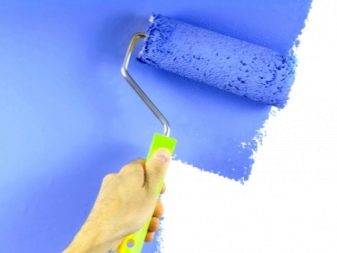
Some people also experience the problem of drying acrylic paints. But to solve this problem, they only resort to diluting it with water and stirring it. It is not right. Experts recommend first turning the dried mixtures into powder, grinding them using special equipment, and then pouring the resulting powder with boiling water.
After that, you need to wait until the water has completely cooled down. It must be carefully drained so that the paint elements remain in the container again. Then you need to repeat this procedure.On the second lap, do not drain all the water completely. It is enough to leave about half of this composition so that there is enough water to dilute the paint to the desired consistency.
Although in its composition this paint will be similar to that that was before drying, but if this procedure is carried out, then its quality characteristics will become worse. With its help, it is better to paint only household buildings and some discreet interior elements. It is not recommended to paint an accent wall with such a coating.
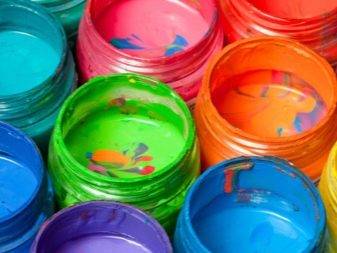
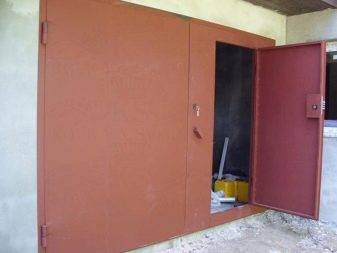
Experts give a lot of recommendations regarding the process of applying paint and the technology of working with acrylic compositions. Before painting walls or other surfaces with acrylics, they must first be prepared. To do this, remove excess dirt and dust, clean walls and ceilings from greasy stains and streaks.
Before using such compositions, it is imperative to level all surfaces, otherwise the paint can emphasize all the shortcomings. Before applying paint, remove all old coatings, including paintwork. For this, it is better to use a quality spatula. Even small particles of paint left after cleaning can damage the new coating.
It is better to treat cleaned surfaces with a primer before applying the composition. Thus, you can protect walls and ceilings from bacteria and fungus and reduce the consumption of acrylic compound during painting. Acrylic paint should not be applied if the surfaces are cracked and uneven. All of them must be covered with putty.

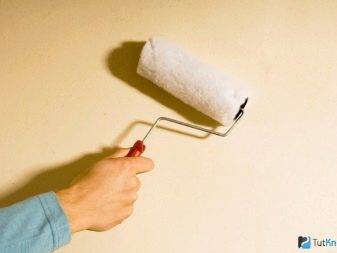
Acrylic paints on the surface of walls and ceilings must be applied in a specific sequence. First you need to paint over all the corner areas and draw clear lines around the entire perimeter of walls and other surfaces using a roller. Then you need to paint the central part with it. In the corners, work with a brush to paint over them better.
In order for the white coating on the walls to look smooth and of high quality, one of the rules must be followed. So, the last decorative layer should be applied with a roller horizontally towards the window. When applying paint to walls, the minimum is two layers. But, as a rule, it is applied in three layers. Thus, you can achieve the brightest and most saturated color, and also cover up all the gaps.
The highest quality painting can be achieved using a spray gun. This mechanical method of painting requires certain skills.
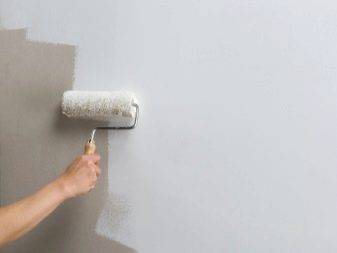
Peculiarities
Acrylic paint belongs to a large water-dispersion group and is a suspension of fine solids in a liquid solution. The division within this group is almost arbitrary, since its solvent is water. Any paint of this type is a thick substance, consisting of different components, due to which it acquires certain properties.
The composition of water-dispersion paint includes elements involved in the formation of a special film on the surface that has a protective function. In addition, it contains fillers, additives and coloring pigments. Fillers can be of both natural origin and synthetic base. Thanks to them, the paint acquires certain properties. The pigment content gives the dye the desired color or shade, and additives improve the properties of the paint.
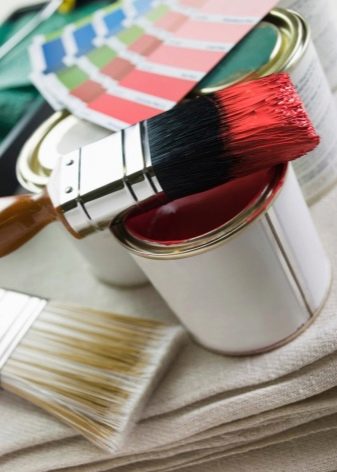
The difference between the various types of this group lies in the bonding components, scope and price.
Acrylic water dispersion paint differs from other types of this group by the presence of polyacrylates. In addition, it contains copolymers that are directly involved in the formation of a film that protects the surface. This film is vapor-permeable, which means that the material under it "breathes".The formation of mold and the development of pathogenic bacteria under the condition of a vapor-permeable surface is practically impossible, and therefore it is not at all dangerous not only for healthy people, but also for individuals suffering from allergies.
All components contained in the paint are non-toxic, and since the basis of acrylic dyes is water, and not a solvent, there is no pungent smell. And there is nothing to ignite here, so an important advantage of acrylic paint is its fire safety.
The film created on the surface of the material is resistant to moisture, in addition, the painted surface is perfectly washable. These properties are also inherent in latex-based water-dispersion paint, but they are absent in the species with PVA in its composition.


An important advantage of an acrylic-based dye is the rapid drying of the painted surface, provided that the prescribed temperature and humidity conditions are observed. In addition, the components in the composition of the paint mask small cracks well, and the surface itself is resistant to mechanical stress.
The service life of acrylic paints is long, the surface that has been painted will have a presentable appearance for at least 8-10 years without cracking, despite the influence of not always favorable external factors.
It is a pleasure to work with acrylic paint. It not only fits well on the surface, but also does not require special protective equipment. All kinds of masks and respirators used when working with solvent-based paints are not needed here, since there are no gases poisonous to the respiratory system. And in case of accidental contact with the skin, it is easy to wash it off, because the basis is water.
Almost the only drawback of this paint is the price. It is slightly higher than that of the water-based analogue.
Sometimes water-based paint is equated with water-based paint. But this is not entirely true, since they differ in composition. Despite the fact that the basis for both another kind is water, the base components of water-based paint can be either chalk or hydrated lime. It also contains PVA. The components directly affect its properties: it deforms faster and has a short service life.
It is interesting: How to choose water-based polyvinyl acetate paints?


